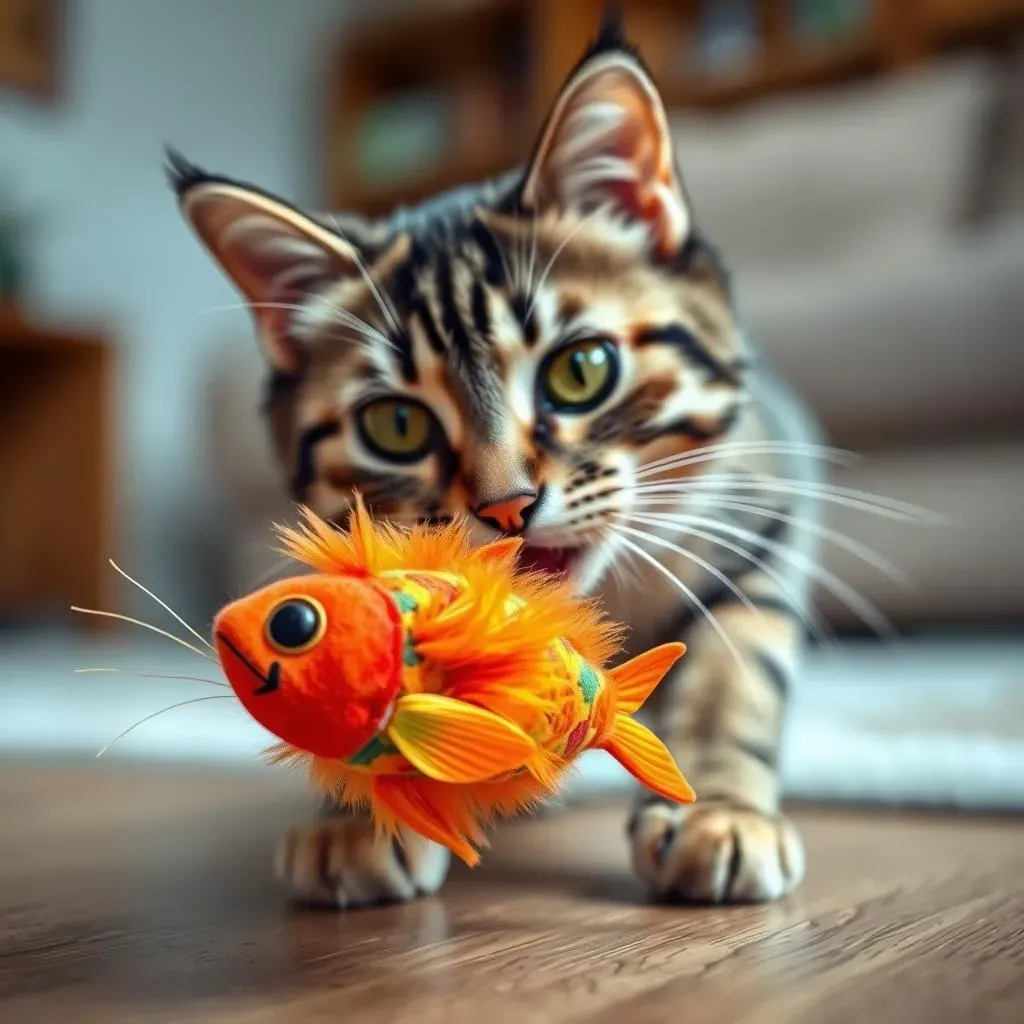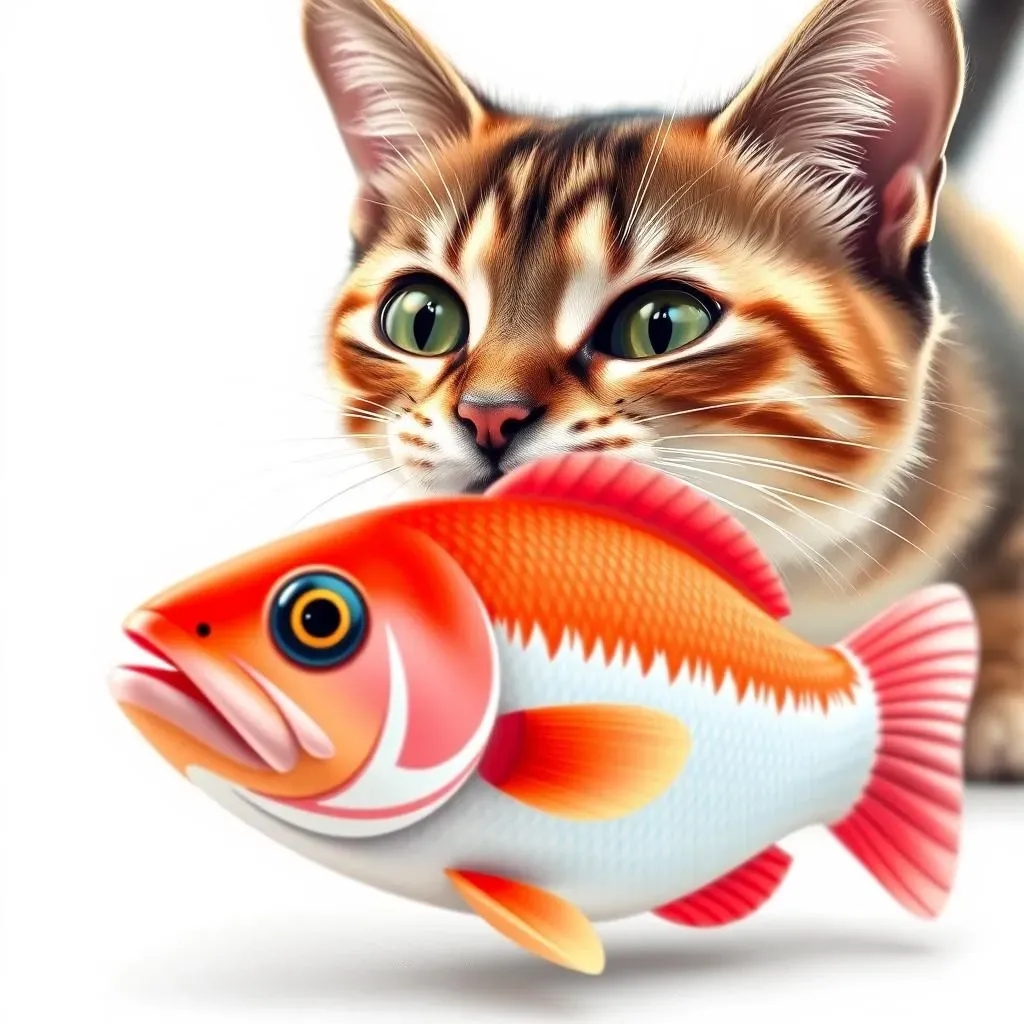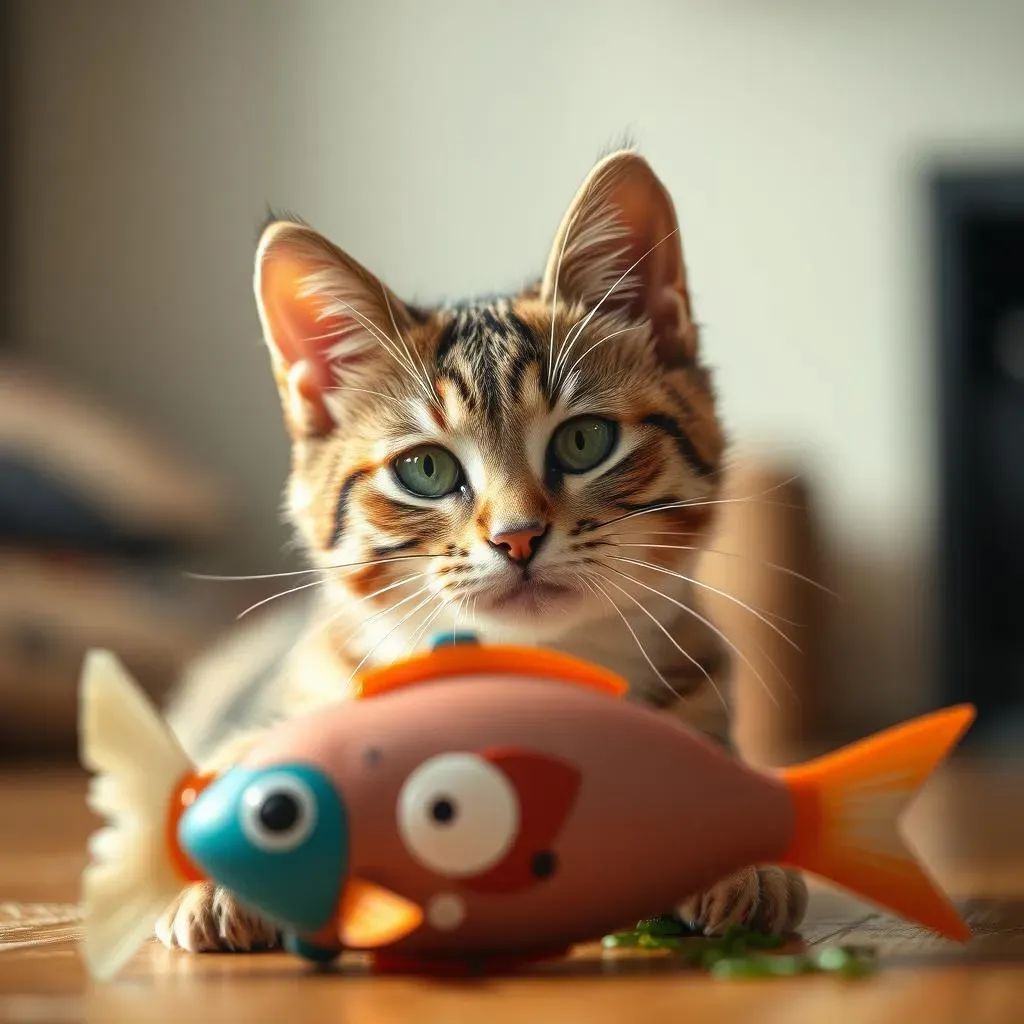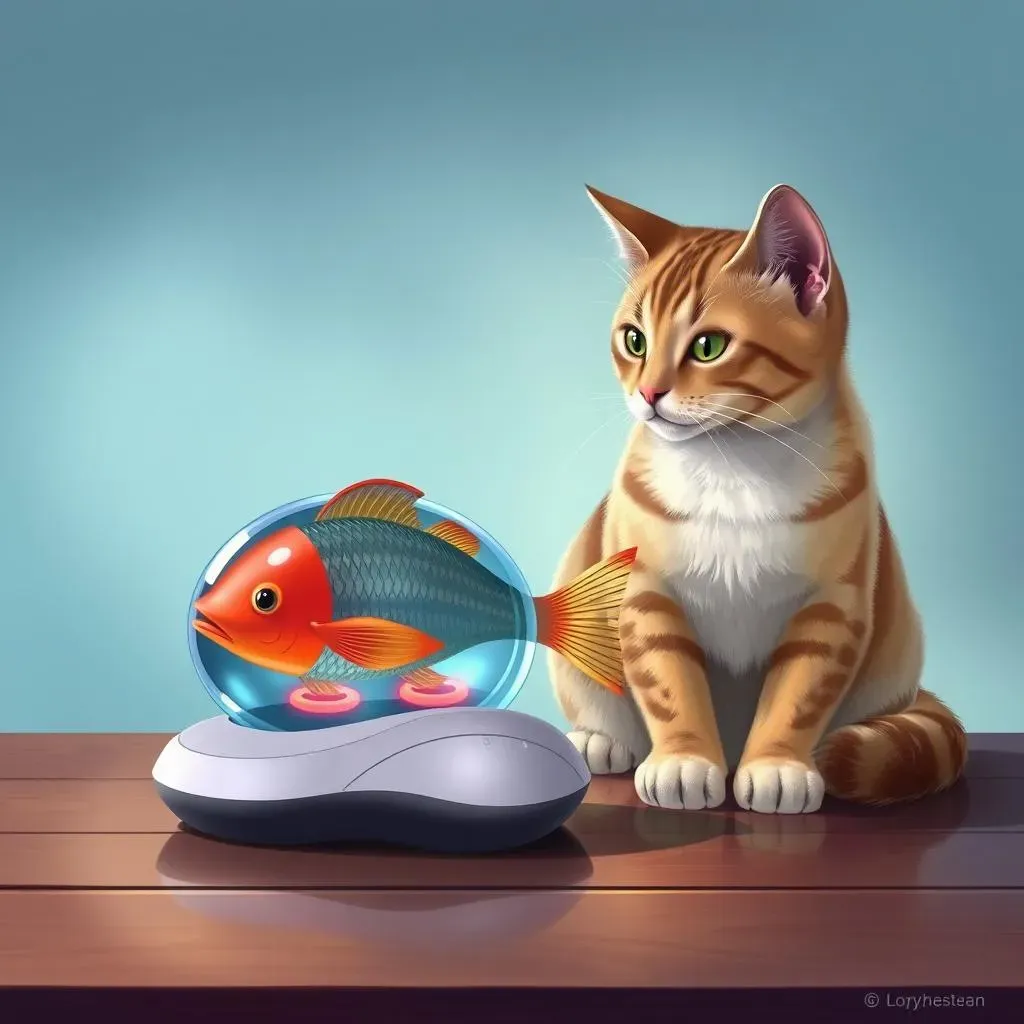Table of Contents
Ever watched your cat stalk a dust bunny with the intensity of a jungle predator? Then you know cats are born hunters, and sometimes, a plain old ball of yarn just doesn't cut it. That's where the magic of a moving fish toy for cats comes in. These aren't your grandma's cat toys; we're talking about lifelike, flopping, and sometimes even catnip-infused fish that can turn a lazy feline into a playful pouncer. In this guide, we'll explore why these toys are so captivating for our furry friends, how to choose the perfect one, and tips to keep your kitty engaged. You'll learn how these toys tap into their natural instincts, making playtime more exciting and beneficial. We'll also tackle common issues, ensuring your cat has the best possible experience with their new, finned companion. So, if you're ready to unleash your cat's inner hunter, stick around – this deep dive into the world of moving fish toy for cats is just what you need.
Why Cats Go Crazy for Moving Fish Toys

Why Cats Go Crazy for Moving Fish Toys
Okay, so you're wondering why cats lose their minds over these floppy fish, right? It's not just some random cat fad. It’s hardwired into their DNA. Think about it: cats are natural-born hunters, and their instincts are finely tuned to movement. That little twitch of a tail, the erratic wiggle of the body – it triggers their prey drive like nothing else. These toys aren't just cute; they are a direct link to the thrill of the chase. A cat sees that fish flopping and their inner lion comes out. It’s like a tiny, plush, and very confusing prey item, and they cannot resist the urge to pounce, bat, and maybe even do a little bunny kick. It's pure, unadulterated feline fun. The unpredictable movement keeps them on their toes, making them engage both physically and mentally. It's way more exciting than another nap on the couch.
It's also about the sensory experience. The texture of the plush, the rustling sound some of them make, and of course, that irresistible catnip often hidden inside, it all adds up to a sensory overload in the best way possible. These toys are designed to stimulate multiple senses, making them incredibly engaging. It's not just about the movement, but the overall package of textures, smells, and sounds that make these toys so appealing to our feline friends. When you see a cat go full ninja on a moving fish toy, you are witnessing a primal instinct being fulfilled. I have to admit, even I get a kick out of seeing my cat go into full hunter mode, even if it's just a plush toy.
Key Factor | Why Cats Love It |
|---|---|
Movement | Triggers their hunting instincts |
Texture | Provides a satisfying tactile experience |
Catnip | Adds an irresistible scent |
Sound | Stimulates their auditory senses |
Choosing the Best Moving Fish Toy for Your Cat

Choosing the Best Moving Fish Toy for Your Cat
Size and Material Matters
Okay, so you're ready to dive into the world of moving fish toys, but hold up a sec. Not all fish are created equal, especially when it comes to your cat's playtime. First, think about size. A tiny kitten won't be able to wrestle a huge tuna-sized toy, and a big ol' Maine Coon might find a small sardine toy underwhelming. You need to consider what's manageable for your cat to grab, bat, and carry around. The material is also key. You want something soft enough for them to sink their claws into but durable enough to withstand a serious thrashing. I've seen some cats get surprisingly aggressive with their toys, and you don’t want it falling apart after a week. Look for non-toxic plush materials that are safe for them to chew on. Remember, if it's got small parts that can be ripped off, it's a no-go. Safety first!
Another thing I've learned is to check the stitching and seams. A poorly made toy will quickly become a sad, de-stuffed mess. You're looking for something that can handle a cat's enthusiastic play, not something that's going to fall apart at the first sign of a pounce. I always give new toys a quick once-over, tugging gently at any seams to make sure they're secure. It might sound a little over the top, but trust me, it’s worth it. Also, think about whether the toy is washable. Cats can be messy, and a toy that can be tossed in the washing machine is a lifesaver, especially if your cat is a drooler or likes to drag their toys through the house.
Feature | Consideration |
|---|---|
Size | Appropriate for your cat's size and breed |
Material | Soft, durable, non-toxic |
Stitching | Secure, reinforced seams |
Washability | Easy to clean for hygiene |
Motor and Movement Styles
Now, let's talk about what makes these toys move. The motor and movement style is what really sets them apart. Some toys have a simple back-and-forth wiggle, while others have more complex flopping actions that mimic a real fish. The more realistic the movement, the more likely your cat is to be engaged. Think about your cat's play style. Does your cat like to chase fast-moving objects, or are they more into slow, deliberate stalks? Some cats love a toy that goes crazy, while others are more into a gentle sway. The motor's noise level is another thing to consider. Some of these toys can be surprisingly loud, which might scare some cats, especially the more timid ones. If your cat is easily spooked, look for toys with quieter motors.
Also, check how the toy is powered. Most of them are USB rechargeable, which is super convenient and saves you from constantly buying batteries. But some still use batteries, and those can be a pain. Rechargeable is the way to go. I've had to replace batteries in cat toys so many times that I’ve lost count, and it’s not exactly the most environmentally friendly option either. Another thing is the battery life. You don’t want a toy that dies after 10 minutes of play, leaving your cat bored and disappointed. Look for toys that have a decent battery life that can withstand at least a few play sessions. It’s all about getting the most bang for your buck and keeping your cat entertained.
- Motor type: Consider a variety of movement from wiggle to flop.
- Noise level: Quieter motors for sensitive cats.
- Power: Opt for USB rechargeable over batteries.
- Battery life: Choose toys with longer playtime.
How to Introduce a Moving Fish Toy and Keep Your Cat Engaged

How to Introduce a Moving Fish Toy and Keep Your Cat Engaged
First Impressions Matter
Alright, so you've got this awesome new moving fish toy, but don't just toss it at your cat and expect them to go wild. It's all about the introduction. Start slow. Let your cat sniff the toy while it's turned off. Let them get used to its scent and texture. Once they seem comfortable, turn the toy on for a brief period, just a few seconds at first. You don't want to overwhelm them with a sudden burst of movement. Keep it short and sweet. Watch their reaction carefully. If they seem curious and engaged, great. If they look startled or scared, turn it off and try again later. The key here is patience. You want them to see the toy as something fun, not something to be feared.
I’ve seen cats who are initially cautious turn into full-on fish-obsessed maniacs with the right introduction. It's really about building their confidence with the toy. I usually start by holding the toy myself and letting it move a bit near my cat, so they feel safer. Sometimes, I even use a feather wand or another toy to kind of "tease" the fish toy, making them more curious about it. It's all about making it an intriguing experience for your feline friend. Think of it like introducing two new cats, you wouldn't just throw them together in a room and hope for the best. Same deal here.
Step | Action |
|---|---|
1 | Let cat sniff the toy while off |
2 | Briefly turn on the toy |
3 | Observe cat's reaction |
4 | Repeat gradually |
Keeping the Fun Alive
So, your cat's now enjoying their moving fish toy, awesome! But how do you keep that spark alive? The trick is to keep things interesting. Don't just leave the toy out all the time. Rotate it with other toys to prevent boredom. A toy that's always available isn’t as exciting as one that makes a special appearance. I usually bring out the moving fish toy during specific play sessions, so my cat anticipates it with excitement. It's like a special treat for them, and it keeps them engaged for longer. Also, think about varying how you use the toy. Sometimes, I let it flop around on the floor. Other times, I dangle it from a string or a stick to add another level of challenge. The more variety, the less likely they are to get bored.
Another thing that works wonders is to add a little bit of catnip or even silvervine to the toy occasionally. This gives it a fresh burst of appeal and rekindles their interest. Sometimes, I even hide the toy in different spots around the house and let my cat "hunt" for it. It's like a little treasure hunt for them and keeps them mentally stimulated. Also, make sure you are engaging with your cat during the playtime. Don't just let them play alone. Interact with them, encourage them, and praise their hunting skills. It's not just about the toy; it’s about the bonding experience and the fun you can have together. A moving fish toy is a tool for fun, but you are the one who makes it a fantastic experience for your cat.
- Rotate toys to prevent boredom
- Use toy during specific play sessions
- Vary play styles
- Add catnip or silvervine for renewed interest
- Engage with your cat during play
Troubleshooting Common Issues with Moving Fish Cat Toys

Troubleshooting Common Issues with Moving Fish Cat Toys
My Cat is Scared of the Toy
Okay, so you've got this awesome moving fish toy, and instead of your cat pouncing with joy, they're hiding under the sofa. Don't worry, it's more common than you think. Some cats are just naturally more cautious, and a sudden, flopping fish can be a bit much for them. First things first, don't force it. If your cat is scared, take a step back and try a different approach. Start by leaving the toy turned off near their favorite spot. Let them get used to its presence without the movement. Once they seem comfortable, try turning it on for just a second or two, and then immediately turn it off. You're aiming to create a positive association with the toy, not a scary one. It's all about baby steps.
Another thing I’ve found helpful is to try a different type of movement. Some cats are scared by fast, erratic motions, but they might be okay with a slow, gentle wiggle. It's like finding the right dance move for your cat. Also, make sure the toy isn't too loud. A noisy motor can be really off-putting for a sensitive cat. If the toy has adjustable settings, try turning the volume down. And remember, patience is key. It might take a few days or even weeks for your cat to get used to the toy, but if you're consistent and gentle, they'll eventually come around. It's all about understanding your cat's personality and adjusting your approach accordingly.
- Don't force interaction.
- Introduce the toy gradually.
- Try different movement styles.
- Check the noise level.
- Be patient and consistent.
The Toy Stopped Working
Alright, so your cat’s loving the moving fish, but suddenly, it’s just…not moving anymore. Frustrating, right? Before you toss it in the trash, let’s troubleshoot. First, check the obvious: is it charged? Most of these toys are USB rechargeable, so plug it in and see if that solves the problem. If it still doesn’t work, check the power switch. Sometimes, they can get bumped or turned off accidentally. And if you’ve got a toy that uses batteries, double-check that they’re fresh and inserted correctly. I’ve spent way too much time troubleshooting battery-powered toys, only to realize it was a simple issue of a loose connection. It’s always the simple things, isn’t it?
If the power is all good, then take a look at the motor. Sometimes, hair, fur, or even small debris can get stuck in the mechanism and cause it to stop working. If you can, carefully try to remove any obstruction, but be gentle. You don’t want to damage the toy further. If you've tried everything and the toy still refuses to move, it might be time to contact the manufacturer or retailer. Many of these toys come with a warranty, and they might be able to help you out. And hey, sometimes things just break. It’s a fact of life, even for our beloved cat toys. But don’t worry, there are plenty of other fish in the sea…or, well, plenty of other moving fish toys out there.
Issue | Troubleshooting Steps |
|---|---|
Not Charging | Check the cable, port, and charging indicator. |
Power Issue | Verify the power switch is on and batteries are good. |
Motor Problem | Clean any obstructions from the motor. |
Still Not Working | Contact the manufacturer for warranty help. |
My Cat Lost Interest
Okay, so your cat was obsessed with the moving fish toy, but now, it’s just another piece of neglected plush on the floor. It happens, and it's totally normal. Cats can be fickle creatures, and what’s exciting one day can be boring the next. The key here is to keep things fresh. Don't just leave the toy out all the time. Rotate it with other toys, so it feels new and exciting when it reappears. It's like a reunion with an old friend, but with more flopping. Also, try to change how you present the toy. Sometimes, I'll hide it under a blanket or behind a piece of furniture and let my cat "hunt" for it. It adds an element of surprise and makes playtime more engaging.
Another thing that works wonders is to add a little bit of catnip or silvervine to the toy. It's like a little boost of extra fun. You can either sprinkle some on the toy or get one of those catnip spray bottles to give it a quick refresh. And don't underestimate the power of interaction. Even the most amazing cat toy is no match for the fun of playing with you. Engage with your cat during playtime, use a laser pointer to guide them to the toy, or just toss it around for them to chase. The more involved you are, the more likely your cat is to stay interested. And hey, if all else fails, there's always the next new toy to try. It’s a never-ending cycle of cat toy exploration, but that’s part of the fun.